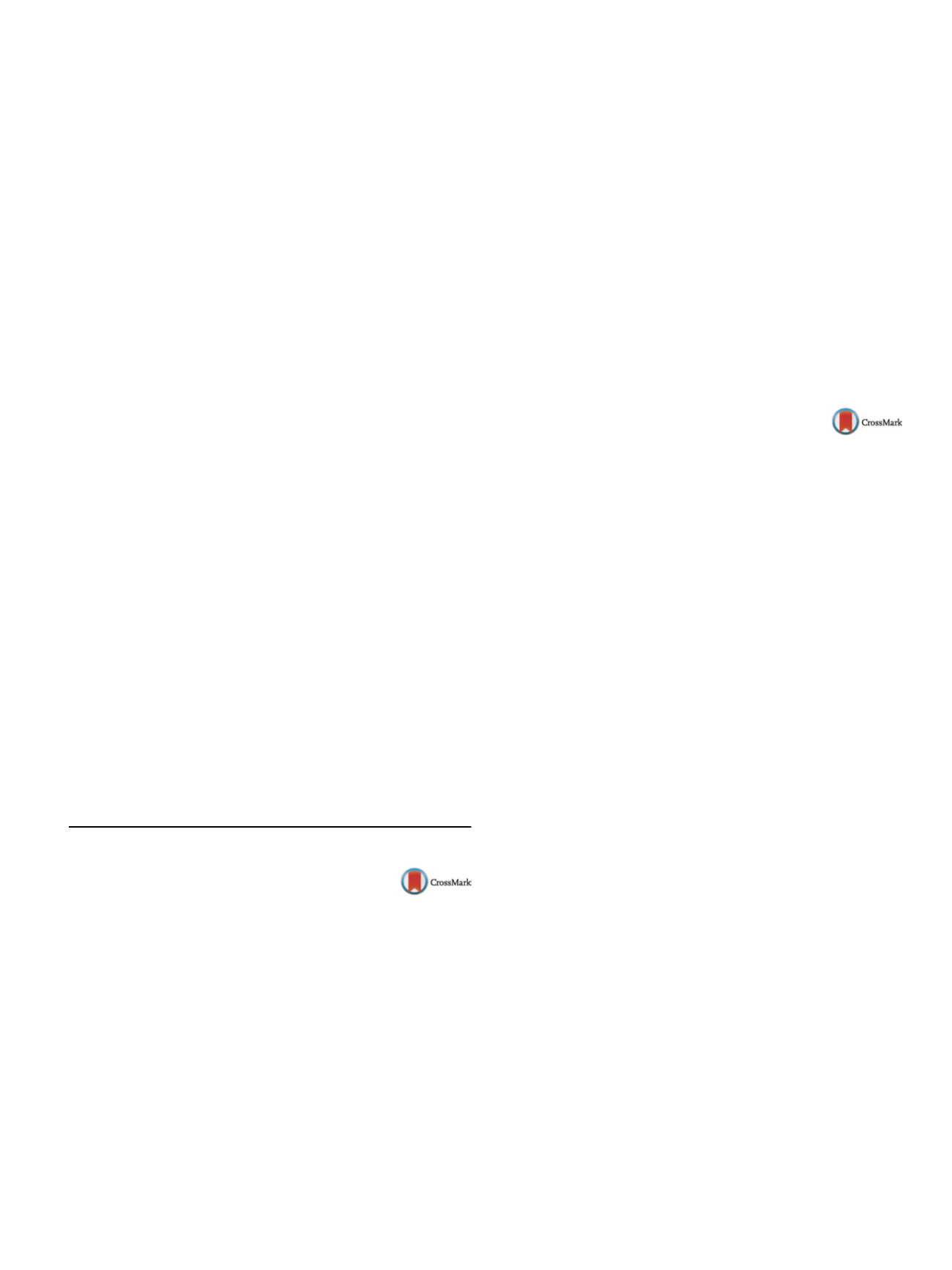

25th European congress of psychiatry / European Psychiatry 41S (2017) S365–S404
S377
3
Internal Medicine and Cardiology Private Practice, Ambulance,
Kosice, Slovak Republic
4
UKF Nitra, Psychology, Nitra, Slovak Republic
5
Psychagogia, Clinical Psychology, Liptovsky Mikulas, Slovak
Republic
6
University Palacky Olomouc, Psychiatry, Olomouc, Czech Republic
∗
Corresponding author.
Background
Psychological distress is considered as a component
of the cardiovascular risk. The present study aims to determine
which psychophysiological, electrocardiographic and anthropo-
metric factors are correlated with life events, depression and
quality of life in healthy adults.
Method
A total of 114 adults were examined using the Social
Readjustment Rating Scale, the EuroQol Group 5-Dimension
Self-Report Questionnaire, Beck Depression Inventory – Second
Edition, Zung Self-Rating Depression Scale. Physiological measures
included heart rate variability, skin conductance level and skin tem-
perature. Anthropometric characteristics included weight, height,
hip size, waistline, blood pressure, heart rate at rest and after men-
tal activity, muscle mass, fat stock, percentage of the body fat,
segmental distribution of muscle and fat mass, fat-free mass and
the water content in the body. Finally, data from electrocardio-
graphic examination included aortic pulse wave velocity, central
aortic pressure and augmentation index.
Results
Life events in last two years correlate with worse quality
of life and a higher level of depression. Life events in last two years
also correlate with the increase of the risk factors for cardiovascu-
lar problems in terms of several anthropometric and physiological
measures. Finally, life events in last two years was also related with
the overweight.
Conclusions
Results suggest some possiblemechanisms bywhich
stress may exert adverse effects on cardiovascular morbidity and
mortality in healthy persons. Primary preventive strategies with
the stress management training may prove beneficial.
Disclosure of interest
The authors have not supplied their decla-
ration of competing interest.
http://dx.doi.org/10.1016/j.eurpsy.2017.02.399e-Poster Walk: Quality management;
rehabilitation and psychoeducation and research
methodology
EW0786
Art therapy for patients in acute
psychotic episodes
T. Aladashvili
Center for Mental Health and Prevention of Addiction, Adult
Psychiatry, Tbilisi, Georgia
Purpose
Evaluate the efficacy of art therapy during acute psy-
chotic episodes.
Methods
Thirty-six inpatients with ICD-diagnoses of schizophre-
nia (F20.0–F20.9) age between 20–60were randomised to either 12
twice-weekly sessions of psychodynamic group art therapy plus
treatment as usual or to standard treatment alone. Art therapy was
administered in 12 sessions of 90minutes for 6 weeks. At 12 weeks,
55% of patients randomised to art therapy, and 66% of patients
receiving treatment as usual were examined. Scales used: 17 – Item
Hamilton Rating Scale for Depression (HRSD) for depression and
Scale for the assessment of negative symptoms (SANS).
Interventions
The approach was non-directive – patients could
choose to createwhatever theywanted and use any availablemate-
rial. Interventions by the art therapist aimed at supporting the art
process and helping to understand the image. The last 30minutes
of a session were reserved for a shared viewing and reflecting on
the images.
Results
With post-treatment and follow-up scores of SANS and
HRSD patients who had received AT had a significantly greater
mean reduction of positive and negative and also depressive symp-
toms at 12-week follow-up than patients treated as usual. Social
functioning was significantly higher in the AT group. There were no
significant interactions between intervention group and gender.
Conclusion
Evidence on the efficacy and effectiveness of AT in
patients with schizophrenia is far from being conclusive and ben-
efits might be limited to a subgroup of patients. Results of this
study suggest AT can be implemented in routine hospital settings
for patients experiencing acute psychotic states.
Disclosure of interest
The author has not supplied his/her decla-
ration of competing interest.
http://dx.doi.org/10.1016/j.eurpsy.2017.02.400EW0787
Perseverative Thinking
Questionnaire: Confirmatory factor
analysis with two different samples
J. Azevedo
1 ,∗
, A.T. Pereira
2, A.P. Amaral
2 , 3, V. Nogueira
2,
M.J. Soares
2, D. Mota
2 , 4, A. Macedo
2 , 41
University of Coimbra, Department of Psychological Medicine,
Coimbra, Portugal
2
Faculty of Medicine, University of Coimbra, Department of
Psychological Medicine, Coimbra, Portugal
3
Institute Polytechnic of Coimbra, ESTESC, Coimbra Health School,
Coimbra, Portugal
4
Coimbra Hospital and University Centre, Psychiatric Department,
Coimbra, Portugal
∗
Corresponding author.
Introduction
Perseverative Negative Thinking (PNT) is a trans-
diagnostic cognitive process
[1] characterized by repetitiveness,
intrusiveness and difficulties to disengage (Ehring, 2011). The Per-
severative Thinking Questionnaire (PTQ-15;
[2] )is a self-reported
instrument, developed to evaluate these characteristics. The Por-
tuguese version assess two meaningful dimensions – Repetitive
thoughts (RT); and Cognitive interference and unproductiveness
(CIU)
[3] .Aim
To confirm the bi-dimensional structure of the PTQ-15 using
Confirmatory Factor Analysis, in two distinct samples.
Method
A sample composed of 256 students (Mean
age = 20.58
±
1.870; 78.1% girls) and a sample composed of
480 adults from the community (parents of the students; mean
age = 50.84
±
5.310; 53.1% women) filled the PTQ-15. We used
software AMOS.
Results
The second-order model of PTQ-15 with two dimensions
presented good fit, in both students (CMIN= 2.449; RMSEA = 0.075;
CFI = 0.958, TLI = 0.949, PGFI = 0.776;
P
< 0.001) and their parents
(CMIN= 3.46; RMSEA = 0.072, CFI = 0.955, TLI = 0.942, PGFI = 0.632;
P
< 0.001). Internal consistency of the total scale, measured
though Cronbach’s alpha was = 0.95/0.94; both factors presented
good/excellent reliability: repetitive thoughts (a = 0.93/0.92); cog-
nitive interference and unproductiveness (a = 0.88/0.92).
Conclusion
Taken together, both CFAs provided additional evi-
dence that PTQ-15 is an adequate measure for perseverative
thinking.
Disclosure of interest
The authors have not supplied their decla-
ration of competing interest.
References
[1] Ehring T, Watkins ER. Repetitive negative thinking as a transdi-
agnostic process. Int J Cogn Ther 2008;1(3):192–205.
[2] Ehring T, et al. The Perseverative Thinking Questionnaire (PTQ):
validation of a content-independent measure of repetitive neg-
ative thinking. J Behav Ther Exp Psychiatry 2011;42(2):225–32.


















